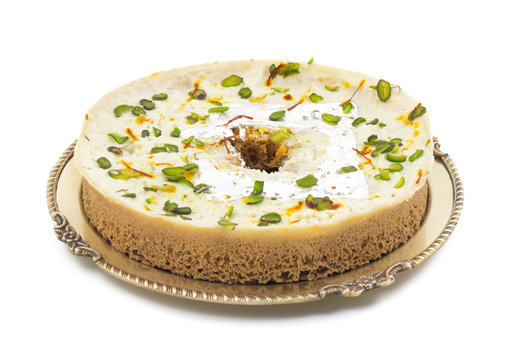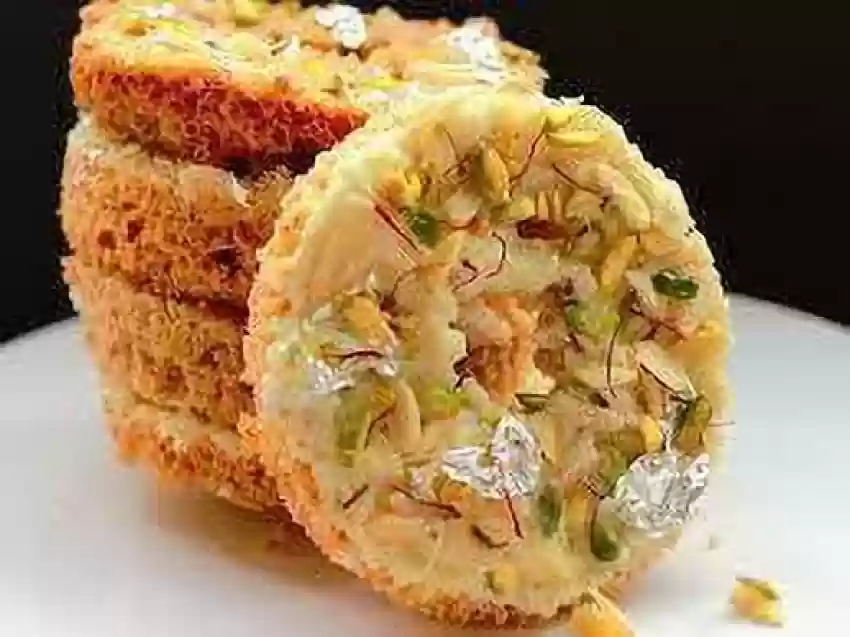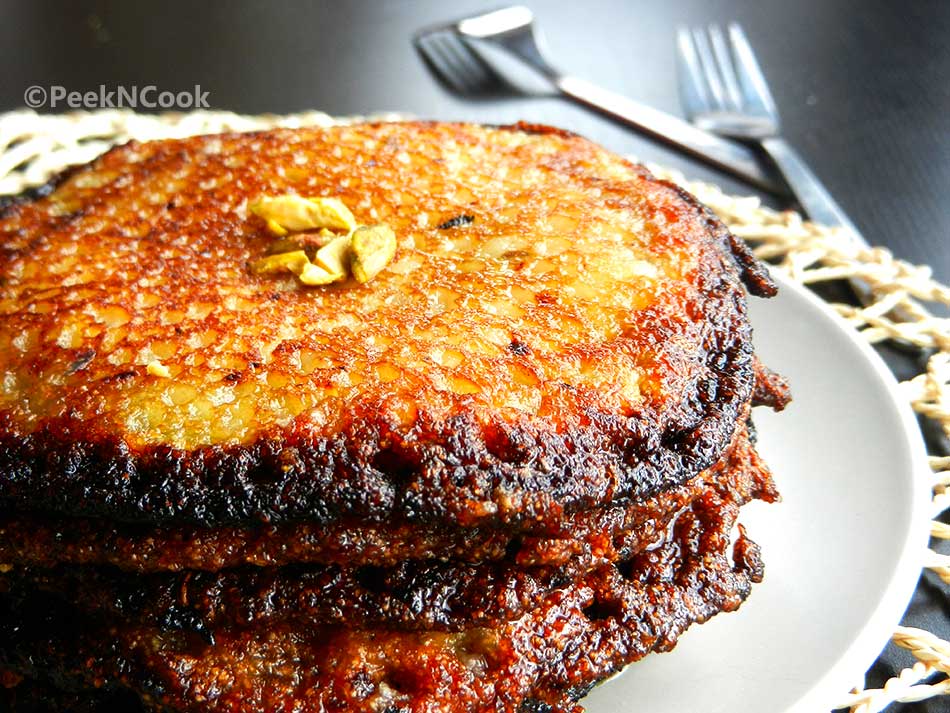Ghevar: The sweet tradition of Rajasthan
India, a land of different cultures, traditions, cuisines, where food is something that comes with the state. One of the regional sweets that have won over food lovers is Ghevar, which remains a signature of this state. Ghevar, with its unique looks and heavenly flavor, has become a popular treat, particularly at the time of festivals and other special events. In this blog, we will explore its origin, preparation, variations, and culture significance, including its place in the modern-day celebrations.
Origins of Ghevar
Ghevar is believed to have originated in the desert state, Rajasthan, known for its warm climate, dry surroundings, and exuberant culture. Legend has it that Ghevar originated in the royal kitchens of Rajasthan during the regime of Rajput kings. The story goes that the sweet was created as a royal confection, intended to please the king and his company during festivities and sacred gatherings. Gradually, it turned from a simple, honeycomb-shaped sweet into a polished dessert that eventually formed part of Rajasthan’s cuisine.
Some say a Rajasthani baker was working with different ingredients to create a theme dessert, mom to pay attention to the bustling markets, and he came up with Ghevar. The invention got huge acceptance and within no time Ghevar became the representative of Rajasthani sweets. It is usually made in festivals like Teej and Raksha Bandhan and is offered as a symbol of prosperity and good luck.

What Makes Ghevar Unique?
Ghevar, at first glance, is an uncomplicated-looking disc-shaped cake, but the structure and taste are anything but ordinary. Ghevar is prepared with a batter of flour, ghee (clarified butter), and water, which the cook deep-fries in a circular mold. The result is a crisp, pockmarked, honeycomb-textured bite that provides a unique crispness and loft. It is achieved by a unique method of swirling the batter when pouring it into hot ghee to obtain the batter to form a layer structure that results in a honeycomb consistency.
After frying till they turn golden brown, Ghevar is dipped in sugar syrup that adds sweetness and moisture. The syrup is sometimes flavored with saffron or rose water, adding a heady fragrance to the Ghevar. Some variations also sprinkle slices of nuts, pistachios or silver leaf (chandi ka warq) over the top for extra richness and elegance.
Ingredients and Preparation
Making of a good Ghevar requires precision, skill and most of all patience. The key ingredients include:
Flour (maida): Base for the batter.
Ghee (clarified butter): The secret ingredient to deep fry and infuse the dish with richness.
Water: To bind the flour into a batter.
Sugar: To make the syrup that gets poured over the fried Ghevar.
Saffron or rose water (or both; optional): To flavor the syrup.
Almonds, pistachios and silver leaf (optional): For garnish
It starts with mixing the flour and making a dough with the ghee, hitting a smooth batter. The batter is poured into a round mold that is dipped into hot ghee. The batter is then methodically dribbled in a spiral, creating concentric circles of dough. It is thickened until it reaches the appropriate consistency, then deep-fried until golden brown and crunchy. The Ghevar is soaked in sugar syrup following frying, which goes a long way to softening it while still retaining its crunchy texture. It is then topped with nuts or silver to make it appear good as well as for taste.
Types of Ghevar
However, did you know that along with the traditional Ghevar, there are many other types depending upon different tastes and choices? Below are the most common varieties of Ghevar:
A simple sugar syrup waters the Ghevar in case of the original version. It is crispy and crunchy, and sweet, the ideal union of texture and taste.
Mawa Ghevar: This kind has mawa (evaporated milk) mixed into the batter, so the Ghevar tastes richer. The mawa also gives the sweet a soft mouthfeel, making it a favorite for those who love creamy desserts.
Malai Ghevar: Malai Ghevar is the next level where the fried disc is topped with malai (clotted cream) to add sweetness to it. This one is rich, delicious and decadent, a dream for anyone who appreciates a decadent dessert!
Saffron Ghevar: A fragrant and flavorful variation is made with saffron soaked in the sugar syrup or added to the batter. To add flavor and color, saffron is used, which also gives the Ghevar its signature scent and taste.
Chocolate Ghevar: A contemporary version of the traditional sweet delicacy, chocolate Ghevar features the crispy texture of Ghevar, along with a layer of chocolate syrup or ganache. The melding of tastes has become a trend, particularly with younger generations.
Thali Ghevar: Another popular version of Ghevar, this special type of Ghevar is made by adding more syrup in the center, giving it a richer taste of syrup.
Value of Ghevar in a Cultural Way
Ghevar is of immense cultural and religious importance in Rajasthan. Its not just a desert, its a part of the rituals during the festivals. For example, Ghevar is such a popular offering to the goddess Parvati on Teej, a festival celebrating the monsoon and the bond between married couples. Ghevar is prepared by women to pray for the good of their family. In the same way, Ghevar is shared between brothers and sisters on Raksha Bandhan which denotes love and concern.
Ghevar also finds a prominent place in weddings and other festivities. In traditional wedding feasts it is often served to guests as a sign of hospitality and blessings. With its complex flavor and detailed theme, it is perfect for festivities, as it brings an element of celebration to any table.

Read more About my Recent Blogs: “Dal Baati Churma: The Royal Rajasthani Experience”
Modern-Day Ghevar
In the past few years, Ghevar has become famous, and is now relished from across India and globally. Ghevar’s culinary evolution has also kept pace with the rise of online food delivery and growing interest in regional Indian sweets; it has now spread to cities like Delhi, Mumbai, and even beyond India, to the United States, the UK and the UAE. Now, various flavors and types of Ghevar are available these days on many modern confectioners and bakeries catering to a global audience.
Even in the face of modern food trends, Ghevar is still a much-loved emblem of Rajasthani tradition and artistry. It remains a staple of festive occasions and is even found on the menus of high-end establishments that focus on regional Indian food.
Conclusion
Ghevar is not merely a sweet, it is a celebration of the rich culinary heritage of Rajasthan. Ghevar ins to be an unusually layered flavored cake with its signature honey-comb like texture, syrupy rich delight and a lot of other yet to be explored varieties. Whether enjoyed in its classic form or with modern innovations, Ghevar serves as a testament to the artistry and culture found within the distinct food traditions of India. So, next time you find yourself at a celebration, don’t tax the diet and enjoy this royal delicacy that has passed the test of time.
